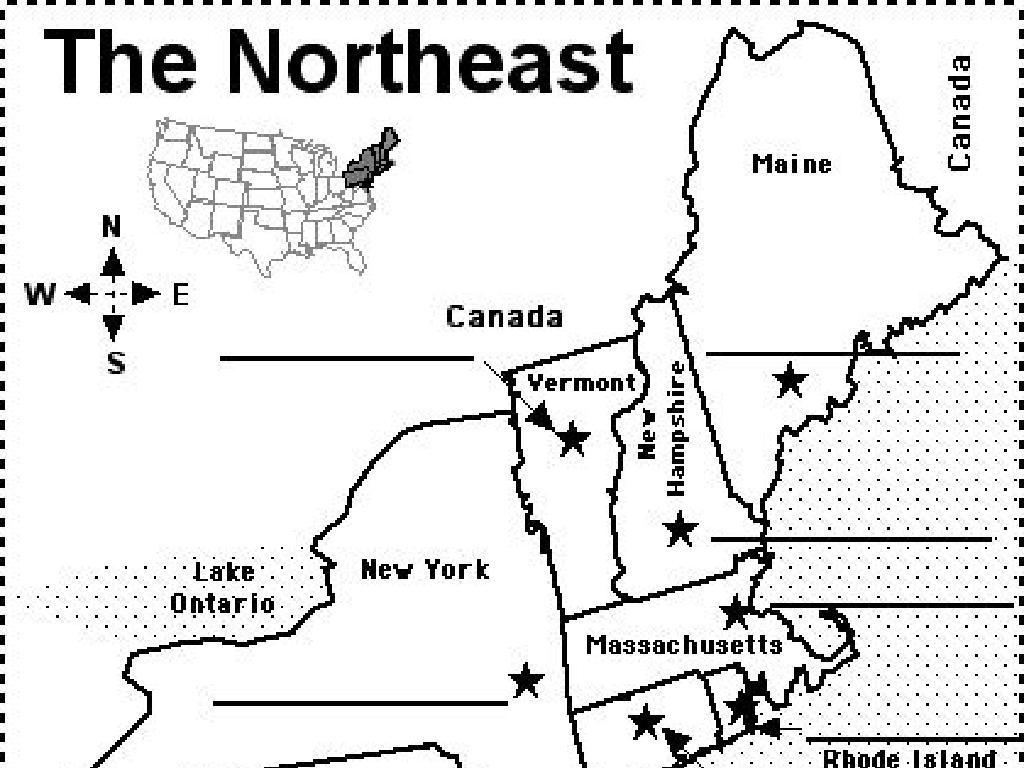Identify Earth'S Land Features Using Photographs
Subject: Social studies
Grade: Fifth grade
Topic: Physical Geography
Please LOG IN to download the presentation. Access is available to registered users only.
View More Content
Exploring Earth’s Land Features
– What is Physical Geography?
– Study of Earth’s natural environments
– Earth’s Surface Overview
– Earth’s surface is diverse with many landscapes
– Focus: Earth’s Land Features
– Mountains, valleys, plains, and plateaus
– Observing Land Features in Photos
– Use photos to identify and learn about different landforms
|
This slide introduces the concept of Physical Geography, which is the study of Earth’s natural environments, including landforms, climates, and ecosystems. Provide an overview of Earth’s diverse surface, highlighting the variety of landscapes such as mountains, valleys, plains, and plateaus. Today’s focus will be on Earth’s land features, and students will learn to identify these features using photographs. Encourage students to observe the details in the photos provided and discuss how these landforms might have been formed. This visual approach will help students better understand and remember the different types of land features they encounter in their studies and in the real world.
Exploring Earth’s Land Features
– Types of land features
– Land features include mountains, valleys, plains, and plateaus.
– Formation of land features
– Natural processes like erosion and tectonic activity shape the land.
– Mountains, valleys, plains, plateaus
– Examples: Rocky Mountains, Grand Canyon, Great Plains, Colorado Plateau.
– Recognizing features in photos
– Use photographs to identify and learn about different landforms.
|
This slide introduces students to the variety of land features found on Earth and how they are formed. Emphasize that land features are created by different natural processes, such as the movement of tectonic plates or erosion by water and wind. Provide clear examples of each type of land feature, such as the Rocky Mountains for mountains, the Grand Canyon for valleys, the Great Plains for plains, and the Colorado Plateau for plateaus. Encourage students to observe photographs of these features to enhance their understanding and recognition skills. The goal is for students to be able to identify these land features in different photographs and understand the processes that formed them.
Exploring Mountains: Earth’s Majestic Landforms
– Understanding mountains
– Mountains are large landforms that rise prominently above their surroundings.
– Key characteristics of mountains
– They have steep sides, high peaks, and a significant height difference with nearby land.
– Examples of famous mountains
– Mount Everest, Rocky Mountains, and the Andes are well-known mountains.
– Significance of mountains in geography
|
This slide introduces students to the concept of mountains as significant physical features of the Earth’s surface. Begin by defining what a mountain is and discussing its prominent features such as elevation, steepness, and the surrounding terrain. Highlight the characteristics that distinguish mountains from other landforms. Provide visual examples of famous mountains like Mount Everest in Asia, the Rocky Mountains in North America, and the Andes in South America to give students a global perspective. Emphasize the importance of mountains in physical geography, including their role in climate, ecosystems, and human culture. Encourage students to think about how mountains affect weather patterns and the environment. Use photographs to help students identify these features and understand their scale and majesty.
Exploring Valleys in Physical Geography
– What is a valley?
– A low area between hills, often with a river
– Formation of valleys
– Created by erosion or glacial activity
– Examples of famous valleys
– The Grand Canyon and the Nile Valley
– Valleys’ role in nature
|
This slide introduces students to the concept of valleys as significant land features in physical geography. Begin by defining a valley and discussing its characteristics, such as being a low area surrounded by higher land, often containing a river. Explain the natural processes that lead to valley formation, including erosion from water or glacial movement. Provide recognizable examples like the Grand Canyon, which was formed by the Colorado River, and the Nile Valley, known for its fertile lands. Highlight the importance of valleys in supporting ecosystems, human settlements, and as pathways for rivers and ancient civilizations. Encourage students to bring in photos of valleys or to draw their own illustrations of how they imagine a valley looks based on the description.
Exploring Earth’s Plains
– What are The Great Plains?
– A vast flat area in central North America, extending from Texas to Canada.
– Plains’ role in agriculture
– Plains offer fertile soil for farming, crucial for food production.
– Comparing plains and plateaus
– Plains are large flat areas, while plateaus are flat but elevated lands.
– Observing plains in photographs
|
This slide introduces students to the concept of plains, focusing on The Great Plains as a key example. Emphasize the flatness and expansiveness of plains, and how this geography is ideal for agriculture due to the fertile soil. Contrast plains with plateaus to highlight the difference in elevation. Use photographs to visually demonstrate these features, helping students to identify plains in real-world images. Encourage students to think about how land features affect human activities like farming. For homework, they could find and bring in photos of plains from different sources.
Exploring Plateaus
– What is a Plateau?
– A flat elevated landform that rises sharply above surrounding area
– Key Characteristics
– They have a flat top and steep rock sides
– Plateau Examples
– The Tibetan Plateau, Colorado Plateau
|
This slide introduces the concept of plateaus to students, helping them understand what plateaus are and their characteristics. A plateau is a large, flat area of land that is higher than the surrounding land. It has at least one steep side, called a cliff. Plateaus are found on every continent and take up a third of the Earth’s land. They can be formed by volcanic activity, erosion, or as a result of the Earth’s tectonic movements. Examples like the Tibetan Plateau, also known as the ‘Roof of the World’ due to its high elevation, and the Colorado Plateau, known for its stunning landscapes and national parks, can be shown in photographs to help students visualize these landforms. Encourage students to think about how plateaus might affect the climate, vegetation, and human activities in these regions.
Exploring Earth’s Land Features
– Identify features using photos
– Observe photos to recognize mountains, valleys, etc.
– Activity: Match names to features
– Pair up land features with their correct names in a fun activity
– Discuss feature’s environmental impact
– Reflect on how landforms like rivers and mountains shape our world
|
This slide introduces students to the concept of identifying land features through photographs, which is a practical application of physical geography. The activity encourages active participation by having students match names to pictures of land features, reinforcing their learning. After the activity, lead a discussion on how these features, such as mountains affecting climate or rivers providing water, impact the environment and human life. This will help students understand the significance of physical geography in the real world. For the activity, consider using a mix of common and less familiar land features to challenge the students and spark curiosity.
Class Activity: Land Feature Detectives
– Break into detective groups
– Analyze land feature photos
– Look closely at the shapes, colors, and textures in the photos
– Identify and label features
– Mountains, valleys, rivers, or plains – use clues to decide
– Present findings to the class
|
This activity is designed to engage students in hands-on learning by working in groups to analyze photographs of different land features. Each group will act as ‘detectives’ to investigate the physical geography within the images. Provide a variety of photographs depicting mountains, valleys, rivers, plains, and other landforms. Encourage students to discuss within their groups to identify and label each feature, using context clues like shapes and textures. After the activity, each group will present their findings, explaining how they identified each land feature. This will help reinforce their understanding of physical geography and improve their presentation skills. Possible variations of the activity could include using images from different regions or climates to compare and contrast land features.
Conclusion: Earth’s Land Features and Their Impact
– Recap of Earth’s land features
– Importance of land feature knowledge
– Understanding geography helps us appreciate Earth’s diversity.
– Discuss land features’ role in life
– Share how mountains, rivers, etc., affect where we live and work.
– Reflect on what we’ve learned
|
This slide aims to wrap up the lesson by summarizing the key points about Earth’s land features. Emphasize the importance of understanding physical geography in appreciating our planet’s diversity and the practical implications it has on human life, such as settlement patterns, agriculture, and transportation. Encourage a class discussion where students can share their thoughts on how different land features influence their daily lives, cultural practices, and community infrastructure. This reflection will help solidify their understanding and personal connection to the material. Possible discussion prompts include: How do rivers provide resources? How do mountains affect weather? How do plains support farming?





